Your cart is currently empty!
Tag: Chicken
-
Japanese Chicken Varieties
The lack of varieties of chickens sold in supermarkets in the US is rather surprising. Some stores make distinctions between organic versus conventional, pastured versus broiler chickens, but rarely do you see a selection of a variety of chicken breeds on sale. The main distinction which is mostly emphasized is which chicken is the cheapest.
But, take a look at the way chicken is marketed and sold in Japan, and there is an astonishing variety of chicken breeds for sale. Here are just ten of these varieties.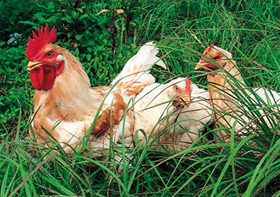
Banshu Hyakunichi Tori
Banshu Hyakunichi Tori is a pasture raised variety of White Cornish from Hyogo Prefecture.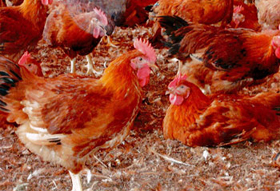
Bungo Akadori
Bungo Akadori is a Red Cornish and Rhode Island Red cross from Oita Prefecture in southern Japan.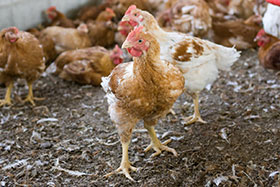
Fumoto Dori
Fumoto Dori is a red chicken from Saga Pefecture in southern Japan.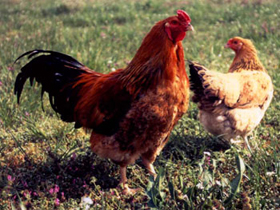
Hyogo Aji Dori
Hogo Aji Dori, which translates to Flavorful Chicken from Hyogo, is a cross between Satsuma and Nagoya varieties of chickens.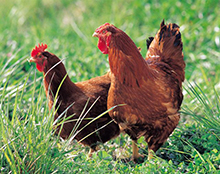
Mikawa Akadori
Mikawa Akadori is a cross between a Heavy Rhode Island and Rhode Island Red chicken from Aichi Prefecture in central Japan. It is a pastured chicken.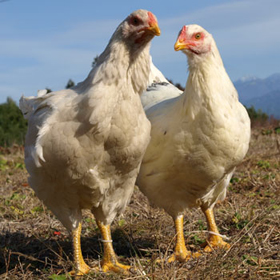
Minami Shinshu Jidori
Minami Shinshu Jidori is a pastured chicken from Nagano Prefecture in central Japan. It is known for its firm, tasty, juicy meat. Only a hundred of these chickens are produced a month.
Mituse Tori
Mitsuse Tori is a variety of chicken based on French breeds. It is raised in Saga Prefecture in southern Japan.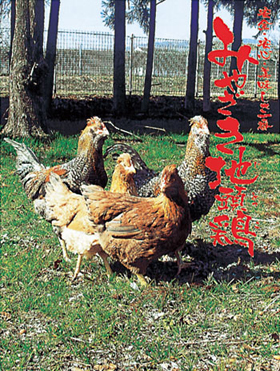
Miyazaki Jidokko
Miyazaki Jidokko is a chicken from Miyazki Prefecture in southern Japan. It is noted for not having the smell chicken meat has, having good texture and being very tasty.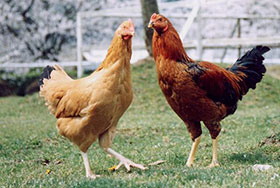
Yamato Niku Dori
Yamato Niku Dori is a pastured chicken from Nara Prefecture. It is known for keeping its shape even when stewed for a long time, and for its rich, sweet juices. Some 8,000 of them are produced each month.
Yasato Honaji Dori
Yasato Honaji Dori is from Ibaraki Prefecture in northern Japan. It is a pastured chicken, fed non-GMO feed, never given antibiotics or medications, and is fed the bacterial culture used to create a type of fermented bean. Supposedly this culture controls salmonella and e. coli 0-157.
These are just a few of the many varieties of chickens raised in Japan. Even though pages on this link are all in Japanese, Guide to Japanese Chickens, browsing through them you can get an idea of the great variety of chickens raised in Japan for the market. -
Nest at the Top of a Stump

High up a stump Chickens are always looking for great places to build a nest. Yesterday I heard a white Bresse cackling by the side of a ten foot tall stump. I climbed up to the top and found a nest with eight eggs. Just one of the eggs was hers, the white egg. The mystery to uncover is what other hen has been laying eggs up there.
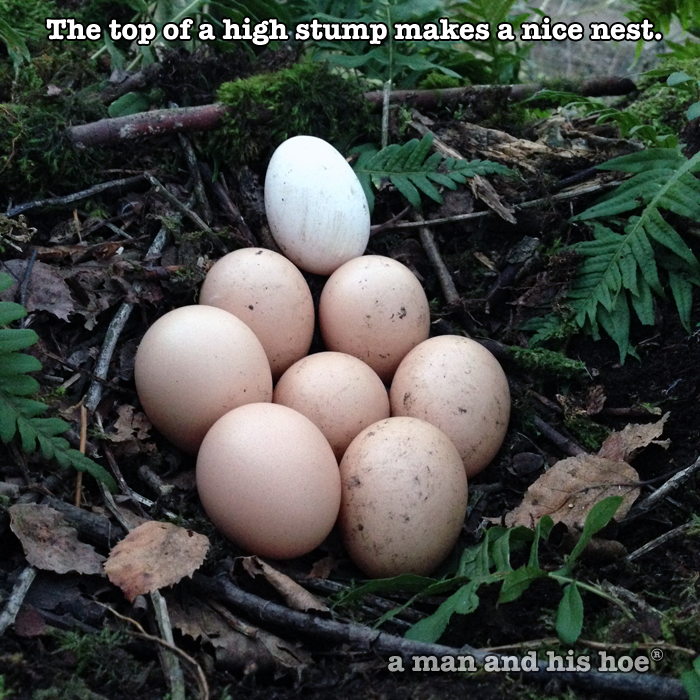
Nest at the top of a stump -
Hazel’s Egg
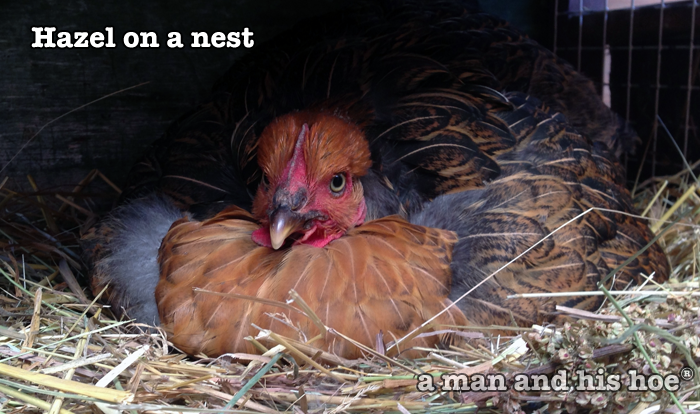
Hazel on a nest Every hen lays a special egg. To lay wonderful eggs, chickens need good food, plenty of exercise, and a quiet place to sit.
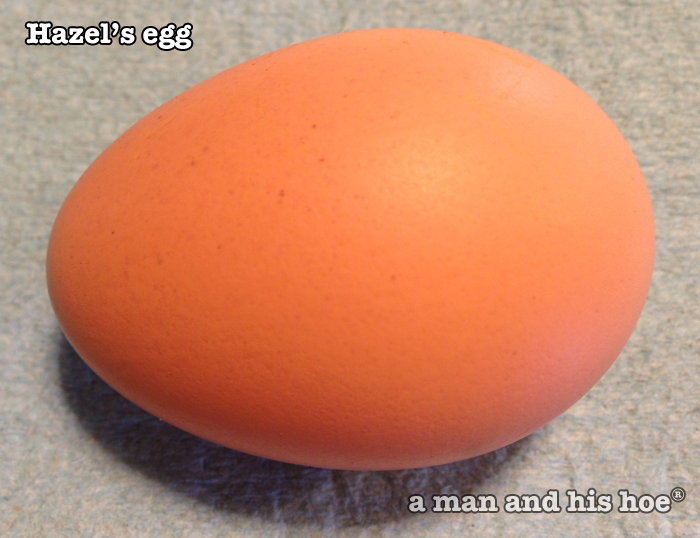
Hazel’s Egg -
Strike a Pose
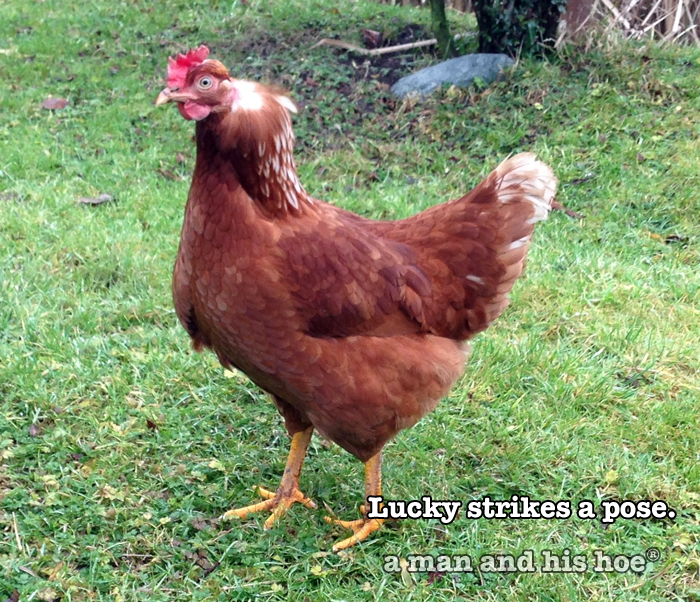
Lucky Strikes a Pose Every chicken at a man and his hoe® has a story. Lucky had an unfortunate accident as a chick. Somehow she scraped the back of her head and for several weeks had to be separated from her siblings and mother while her wound healed. We kept her in a wire cage next to her siblings so she wouldn’t feel isolated. Even so, it was not an easy time for her as she so wanted to be running around with them. Unfortunately, chicks can’t help but peck when they see blood, and if we had let her run with her siblings, she would have met with an unfortunate demise.
Once her wound healed, we were able to set her free. Now she cuts an imposing figure, and has a habit of laying her egg in one of the dog houses. If we don’t fetch her egg quickly enough, the dogs get a tasty snack. We just have to keep our ears attuned to her “I’ve hatched an egg” cackle between seven and eight in the morning to fetch the eggs before the dogs get it.
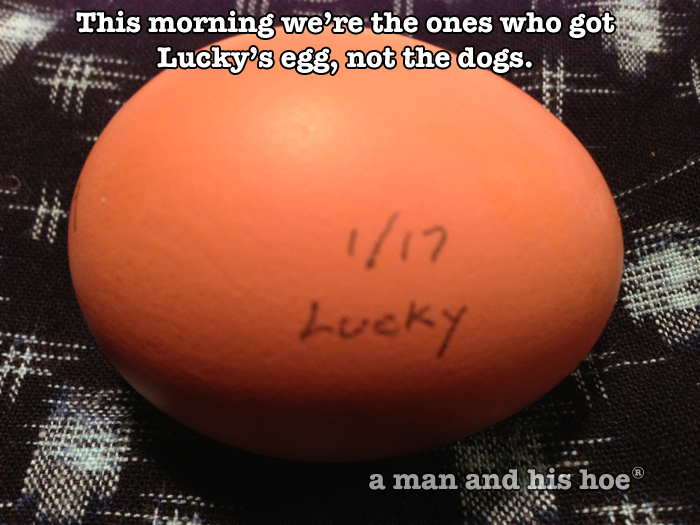
Lucky‘s Egg -
Morning Eggs
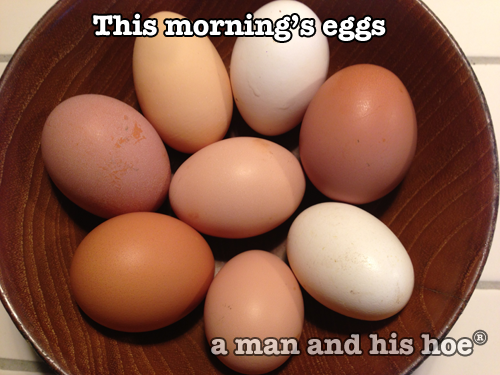
Morning-Eggs
Even though it is still early January, the hens are laying more eggs. Their winter slump has ended and daily egg production has gone from five to seven up to eighteen. It will double from that in a few months.
We have one hen, Lucky, who lays her eggs in one of the dog houses. Each morning it is a race between us and the dogs as to who gets her eggs. This morning we got the egg. Most mornings all we find is an empty shell.
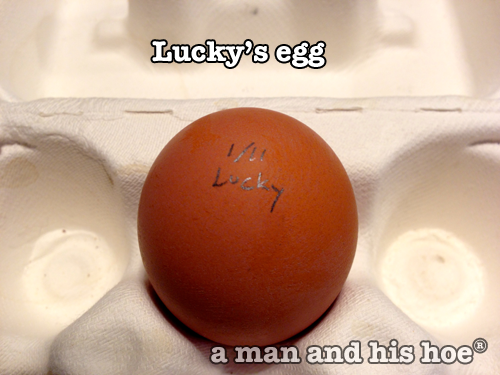
Lucky’s Egg